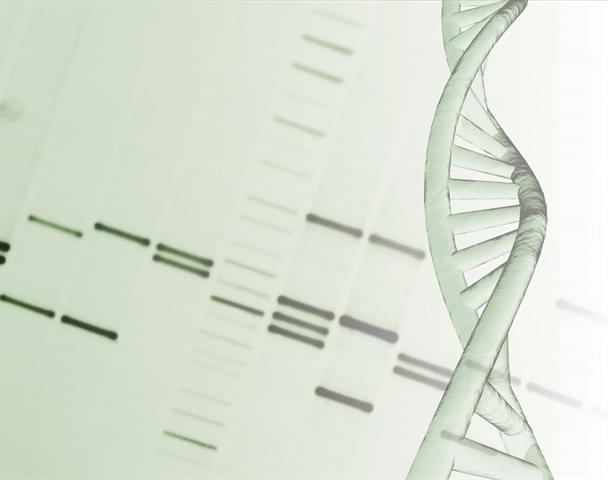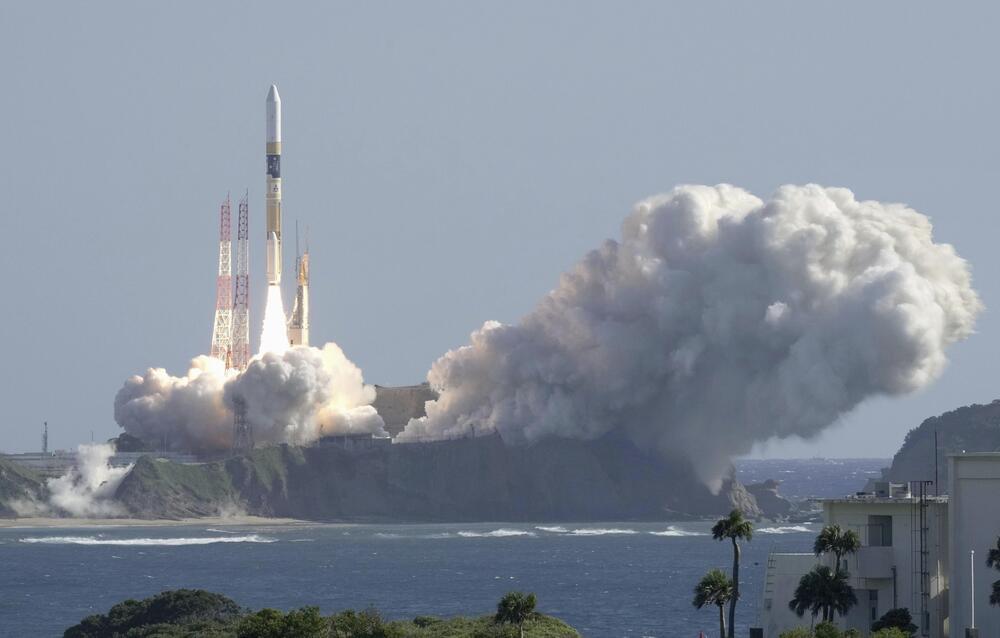Processing on the fly gives extreme drones the edge.
Get the latest international news and world events from around the world.


Novel method using DNA nanoballs could revolutionize pathogen detection
Researchers at Karolinska Institute have developed a novel method using DNA Nanoballs to detect pathogens, aiming to simplify nucleic acid testing and revolutionize pathogen detection. The study’s results, published in Science Advances, could pave the way for a straightforward electronic-based test capable of identifying various nucleic acids in diverse scenarios quickly and cheaply.
Principal investigator Vicent Pelechano, an associate professor at Karolinska Institute’s Department of Microbiology, Tumor and Cell Biology, is cautiously optimistic about the technology’s potential to detect an array of pathogenic agents in real-world settings.
“The methodology involves combining Molecular Biology (DNA Nanoball generation) and electronics (electric impedance-based quantification) to yield a pioneering detection tool”, says Vicent Pelechano.

Telomere-boosting mRNA therapeutic turns back the aging clock
This is a big deal, kids.
For the past five years, Silicon Valley biotech Rejuvenation Technologies has been quietly working on a therapeutic platform to extend telomeres in the human body, with the goal of boosting longevity and healthspan. Yesterday, the company emerged from stealth with a healthy seed funding round of $10.6 million, led by Khosla Ventures.
Rejuvenation has developed a synthetic mRNA-based approach to restoring telomeres to a “healthy length” – capable of reversing a decade of telomere shortening in a single dose. The mRNA produces telomerase, an enzyme that plays a critical role in maintaining the length of telomeres. Following positive preclinical results in lung and liver disease indications, the company is now preparing the path towards its first in-human trials.
Longevity. Technology: Telomeres are protective structures on our DNA that prevent the loss of genetic information as the cells in our bodies divide. With each cellular division, our telomeres gradually shorten and, when they become critically short, our cells enter a state of senescence or die. Research has shown that telomere length is closely associated with lifespan and healthspan, and telomere shortening is recognized as one of the primary hallmarks of aging.
While it has long been known that the enzyme telomerase extends telomeres, it was only recently that safe, rapid telomere extension has been enabled by the delivery of mRNA. To learn more about how Rejuvenation Technologies is targeting telomeres and longevity, we caught up with co-founders Dr Glenn Markov and Dr John Ramunas.
How Immune Cells Can Make Their Own Movements More Effective
Immune cells have to respond to threats like invading pathogens and cancerous cells, and sometimes, they must push through tissues and move into tight spaces, and do it quickly. New work has shown that some immune cells have their own mechanisms to guide them through environments that are tough to navigate so they can reach the right place in time. This work, which has been reported in Science Immunology, may also help us learn more about boosting the natural immune response.
Dendritic cells are a type of white blood cell that are crucial to the immune response. They help link the general innate immune reaction that fights invaders broadly, and the adaptive immune response, which is aimed at very specific targets. Dendritic cells sit in tissues, monitoring it for foreign substances. If an infection is identified, the dendritic cells swing into action and signaling molecules called chemokines help them move to the lymph nodes to trigger the next part of the immune response.

Japan launches rocket carrying lunar lander and X-ray telescope to explore origins of universe
TOKYO (AP) — Japan launched a rocket Thursday carrying an X-ray telescope that will explore the origins of the universe as well as a small lunar lander.
The launch of the HII-A rocket from Tanegashima Space Center in southwestern Japan was shown on live video by the Japan Aerospace Exploration Agency, known as JAXA.
“We have a liftoff,” the narrator at JAXA said as the rocket flew up in a burst of smoke then flew over the Pacific.
The links between telomerase and aging
Telomerase helps maintain telomere length in our cells, influences how our bodies age, and why we develop diseases like cancer. If cells had enough telomerase, telomeres might not shorten at all. But in most somatic cells, it’s present in very low amounts — only enough to slow the telomere shortening down.
This is part of a short series of videos where we explore telomeres, telomere length and telomerase, as well as the impacts they have on our health.
Chapters:
00:00 What is telomerase?
00:25 What happens when telomeres are too short?
00:38 How does telomerase work?
01:23 How does telomerase affect cancer risk and aging?
Watch the next video explaining Telomere Biology Disorders: https://youtu.be/sVTd0ZkTH3k.
Missed the previous video on the end replication problem, and how telomere shortening affects aging? https://youtu.be/pluI6SOd-_I
RepeatDx is a leading clinical laboratory for telomere length testing. You can find out more on our website: https://repeatdx.com/

Hungry black hole regularly eats planet-sized chunks of star
New observations made with the Neil Gehrels Swift Observatory provide a “missing link” in our knowledge of black hole and star interactions.
A Sun-like star in a galaxy near ours is slowly being eaten by a relatively small black hole.
Though it’s small for a black hole, it is extremely active and devours the equivalent mass of three Earths every time the star passes close by, a press statement reveals.
Scientists grow human kidneys inside pigs using stem cells
For the first time, scientists produced human kidneys out of chimeric embryos containing a mix of pig cells and human stem cells. The same technique can be used to produce heart and pancreas.
A team of Chinese researchers has successfully grown early-stage developing human kidneys into female pigs using chimeric embryos.
“This is the first time a solid human organ has been grown inside an animal species other than humans,” Liangxue Lai, senior study author and a biologist at the Guangzhou Institutes of Biomedicine and Health, told Interesting Engineering.

Membrane-free lithium-ion batteries could help power grid
Removing membranes could shave off as much as 30 percent of battery costs since they are the most expensive components.
Researchers at the University of Cincinnati in the US have developed a new design that could make lithium-ion batteries much cheaper to produce. This can have a profound impact on the large-scale energy storage systems needed to store renewable energy, a press release said.
Lithium-ion batteries, extensively used for power electronic devices, have also found their way into electric vehicles (EVs) thanks to their superior energy density over conventional batteries. These can also be deployed to store renewable energy when production is high, but the demand is low.